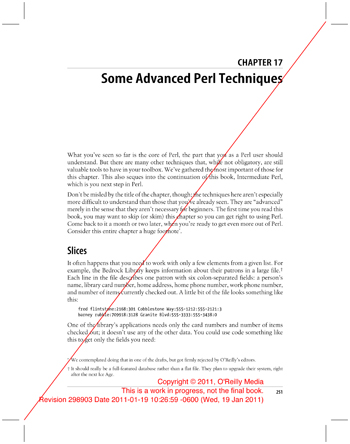[This post notes differences between the fifth and sixth editions.]
I didn’t have much to update in the hashes chapter, so when you get to Perl 5.14, you’ll find that Perl’s hash features are the same things you had in previous versions of Perl.
However, I did move the “fat arrow”, => stuff from Chapter 17, “Advanced Perl Features”, to the hash chapter. Why have it so far away? It’s just a couple of paragraphs, so it’s moved up to the first half of the book.
